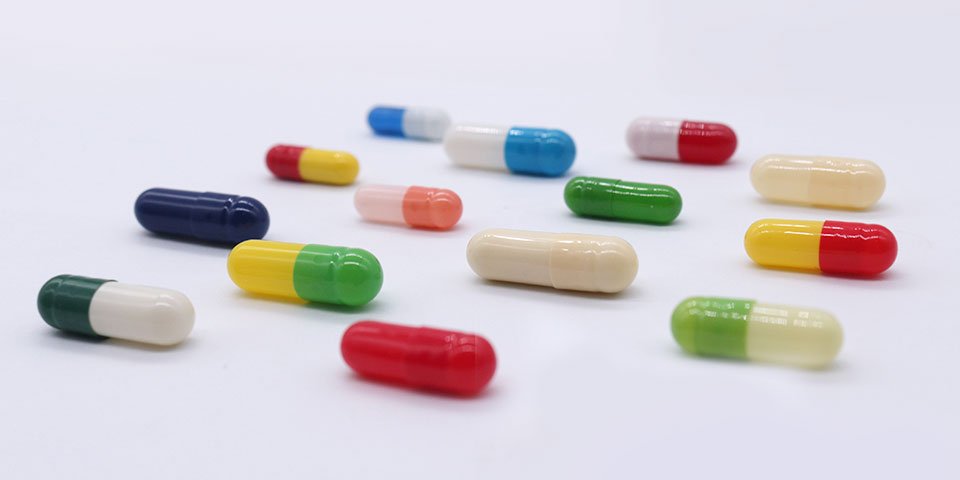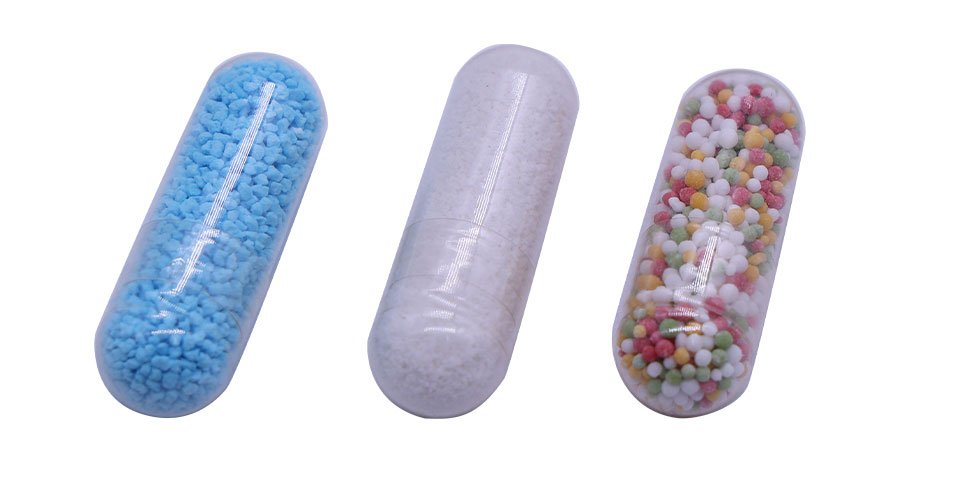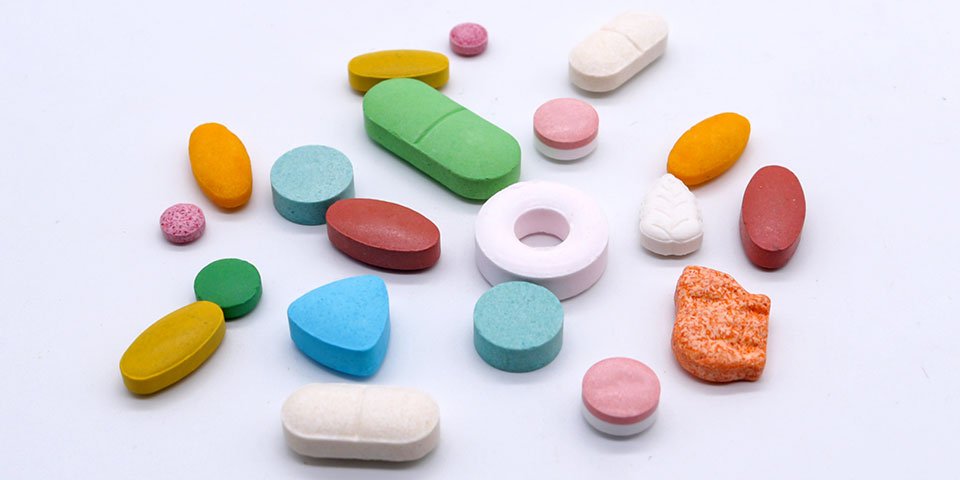Whenever we have an illness or need daily nutritional supplements, we usually come across two main forms of pharmaceuticals: capsules and tablets. So, what is the difference between these two forms? What are the advantages and disadvantages of each? How are they made? How do we choose the form of medicine that is more suitable for us? RichPacking combines more than 30 years of pharmaceutical machinery pharmaceutical experience and more than 4510 solutions to provide you with detailed answers and analysis to these questions in this article.
In general, capsules are a very useful pharmaceutical dosage form that can make medicine treatment more convenient by precisely controlling the dosage of ingredients filled in the capsule. The design inspiration is similar to a sandwich candy. Its main function is to accurately and hermetically pack the medicine into a capsule, firstly to mask the bitter or peculiar smell of the medicine itself, and secondly to protect the medicine from light and moisture.

As a commonly used type of pharmaceutical preparation, hard capsules are composed of a capsule body and capsule cap as well as internal ingredients, while soft capsules usually consist of a soft shell and internal liquid ingredients. The internal components are usually filled with powder, granules, pellets or liquid. The materials usually used for capsule bodies are gelatin, starch or methylcellulose.
Depending on the nature of the filling material and the need for treatment, the capsules will be designed to dissolve in the stomach or intestines, which are gastric-soluble capsules and enteric-coated capsules. Their main difference lies in the location of dissolution and release of the medicine in the human digestive tract.

Gastrosoluble capsules:
This type is mainly used for medicines that need to work in the stomach, or those that are more easily absorbed in the acidic environment of the stomach, dissolve quickly in gastric juice, and are released. A simple analogy is that medicines that treat stomach diseases are usually Use gastric-soluble capsules.
lEnteric-coated capsules:
The capsules are designed so that the medicine is broken down and released after entering the intestine. Since the stomach is located farther forward than the intestines in the human digestive tract, in order to resist corrosion by gastric juice, its outer shell must be made of a special material to remain intact in the gastric juice. Its real purpose is to dissolve and release the medicine after it enters the intestine and encounters an alkaline environment. Such capsules are often used for medications that need to work in the gut, such as some probiotics and intestinal anti-inflammatory medications.
The selection of these two capsule types needs to be determined based on the characteristics of the medicine and the therapeutic goals, because the final filling effect must be to improve the therapeutic effect of the medicine and reduce side effects.
Tablets are generally composed of main ingredients and excipients and are pressed under high pressure. The shape is usually round, while oval and triangular shapes are also more common. They can also be multi-layer tablets or multi-color tablets depending on the formula and needs.

It is not only a common pharmaceutical dosage form, usually small-diameter tablets; now it is also more common in daily necessities and chemical industries, often appearing in large-diameter or large-thickness formats.
Usually tablets are used in the pharmaceutical industry, and the shape and diameter of tablets are relatively conventional. For example, the diameter of tablets produced by large pharmaceutical factories is generally between 6 mm and 12 mm, and the shape is mainly round.
When used in daily dietary supplements, vitamin effervescent tablets are mainly used. The thickness of this form of tablets is not thick, and the main manifestation is that the diameter is large, generally more than 20 mm.
There is also the field of chemicals and daily necessities, mainly for washing tablets, dishwashing tablets, disinfection tablets, fish bait, etc., which are well-known for their deep thickness and large diameter, as well as the appearance characteristics of multi-layer tablets or square and spherical shapes. Usually the diameter and thickness All exceed or approach 30 mm.
Similar to capsules, tablets can also be divided into regular tablets, sustained-release tablets, controlled-release tablets, etc. according to the way and speed of medicine release. After taking ordinary tablets orally, the medicine ingredients will quickly dissolve and release in the digestive tract and be absorbed by the body; sustained-release tablets and controlled-release tablets, as their names suggest, can control the sustained release of the medicine within a certain period of time, thereby maintaining the stability of the medicine concentration in the body.
The advantage of tablets is that they are easier to manufacture than capsules and facilitate standardized production, transportation and storage. Also, some tablet types may be difficult for children and the elderly to swallow due to their shape and hardness. Some tablets are difficult to divide accurately, which can cause inconvenience when dosage adjustments need to be made.
Manufacturing of capsules
The production process of capsules is a relatively complex systematic process, which is mainly divided into two parts: the production of capsule shells and the filling of capsules.
1. Make capsule shell:
The material used to make the capsule shell is gelatin or plant cellulose. It is first formed into a solution and then baked and attached to the mold, then cooled and solidified. Finally, after cutting and removing the mold, the capsule shell is made.
2. Fill the internal ingredients of the capsule:
During the entire capsule filling machine process, the capsule shell must first separate the cap body, fill the medicine powder, liquid or granules into the capsule shell, and then seal the two parts again, and finally form a complete capsule with practical value.
In this process, specialized production machines and capsule filling machines are required.
Compared with the manufacturing and filling of capsules, the manufacturing of tablets is a relatively less complicated process. The following are the general steps:
1.Formula research and design:
As an important part of solid preparations, professionals are required to prepare medicine formulas according to needs, and the material properties need to be considered whether auxiliary ingredients (such as stabilizers, excipients, etc.) that help shape or improve the viscosity of the material need to be added. agents, etc.).
2.Pretreatment of raw materials:
Through screening, crushing, and mixing of raw materials to ensure the purity and quality of raw materials, and to fully mix various raw materials.
3.Tablet pressing:
Put the mixed raw materials into the rotary tablet press, and press them into uniform tablets of various shapes and sizes that meet the needs through the principle of high pressure.
4.Coating:
After the tablets are finished from the tablet press, they may need to be coated based on demand. The purpose is to make the tablets look smoother, easier to swallow, and to prevent moisture and light.
The above-mentioned knowledge and knowledge about capsules and tablet presses is the answer RichPacking is capable of providing as China's leading complete pharmaceutical and packaging machinery manufacturer. The capsule filling machines we produce are available in semi-automatic and fully automatic models, with filling capacities ranging from 10,000 to 450,000 capsules per hour. With our continuous research and development and improvement, the rotary tablet press can achieve tablet diameters from 2mm to 60mm, with an output of up to 950,000 tablets per hour. Based on more than 4510 solutions and long-term cooperation with up to 1120 customers, we have made great efforts in operation and cleaning convenience. The quick design of the capsule filling machine mold, the intelligent waste rejection system of the high-speed rotary tablet press, and the absence of residual powder on the machine workbench are all high-end functions of our machines and are the points that really impress customers.
If you happen to need to purchase pharmaceutical and packaging equipment, such as capsule filling machines and tablet presses; or if you want to find a professional who knows the pharmaceutical industry very well, welcome to contact us, we look forward to sharing it with you.